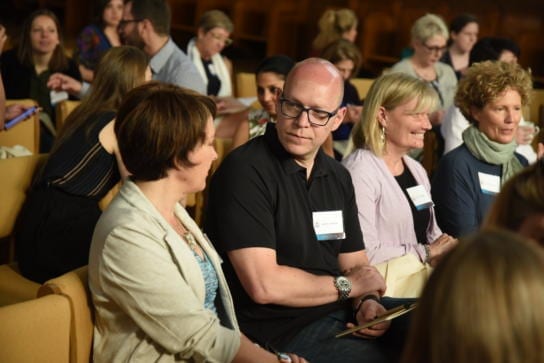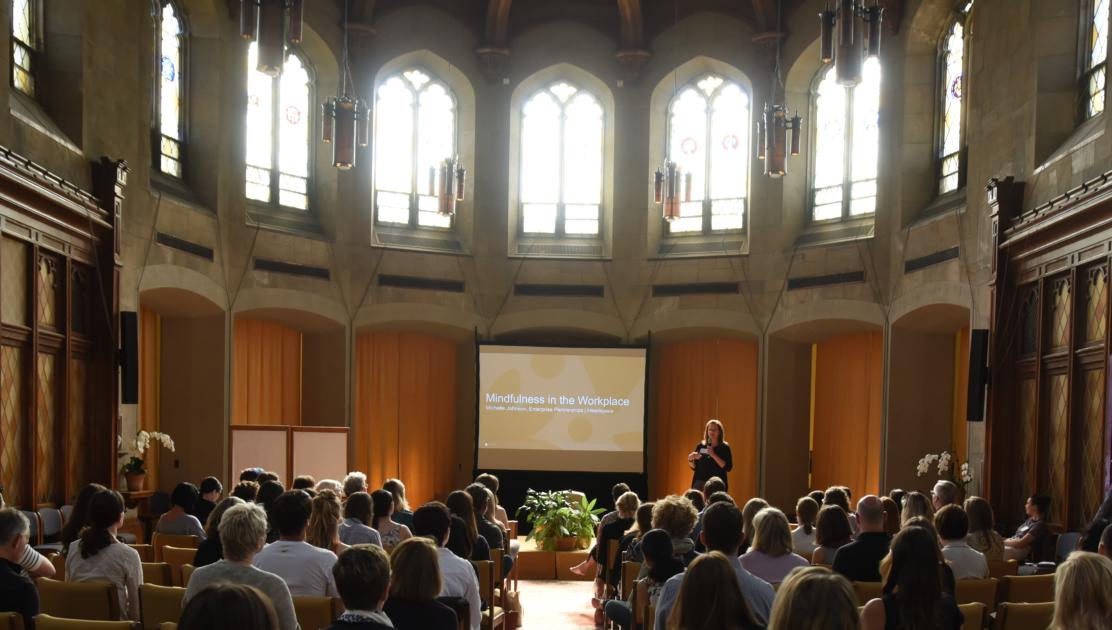Champions Come Together for the Inaugural Workplace Wellness Leadership Summit
By Garrison InstituteLast week, the Garrison Institute in partnership with the International Well Building Institute hosted the inaugural Workplace Wellness Leadership Summit (WWLS) as a part of the Institute’s Transformational Leadership Initiative. The WWLS brought together nearly 100 interdisciplinary leaders from across North America who serve as champions of workplace wellness, spanning roles in sustainability, human resources, health, organizational development, interior design, and architecture. The goal of the summit was to connect and build a body of wisdom in order to deepen our understanding of what health and wellness in the workplace are, how human-centered design can enhance workplace wellness, and ways in which we can move closer towards building workplaces and environments that support talent and a thriving culture.
The WWLS was headlined by 17 leaders shaping cultures of wellness within their own organizations and as consultants and advisers to Fortune 500 companies across the globe. The summit commenced with an opening night networking reception and grounding dinner, followed by a panel discussion: Invest in People: A Leader’s Role in Shaping Wellness. Some of the many topics covered were mindful self-awareness in leadership, employee engagement through empowerment, and the need for leaders to create systems for supporting mid-level employees and effective change-management.

The first full-day program began with a morning yoga session and time for personal reflection followed by a presentation from Michelle Johnson on workplace engagement and a guided meditation provided by Headspace. Jaqueline Carter of Potential Project led us through a presentation on the three keys to leadership in the 21st Century -mindfulness, selflessness, and compassion- and helped us to consider how we can become more present, focused leaders.
An expert panel for Design Well: Exploring the Intersection of Space & Human Experience, shared insights on the role of our physical environment on workforce culture, as well as their foresight into the future of talent acquisition and retention and how we can implement universal design toward inclusion and supporting our changing human needs and workforce talent. A breakout session expanded upon these morning topics.
An afternoon breathing session was followed by the day’s second panel: Wellness that Works: Building Programs with an Impact. Experts shared their considerations for being proactive rather than reactive, including the importance of measuring what you are doing to create meaningful outcomes and the need for building a roadmap for change. One key point the panel impressed throughout the discussion is the value of the business case for wellness in the workplace: measuring absenteeism, healthcare costs, and finding ways to quantify the impact of employee stress on the organization are just a few ways we can begin to shape the value proposition of wellness programs.
The final day of the WWLS opened with Dr. Nancy Post’s presentation: Leading Change: Turning Insights into Action, through which we explored the relationship between the individual, the team, and the organizational dynamic and the critical role that of planned systemic change in replenishing energy and supporting resilience and enthusiasm towards a healthy workplace. The summit closed out with breakout sessions and a reflection on best practice and key takeaways. Conversations do not end with this event, as this cohort of leaders will have the opportunity to engage in ongoing exchange through an online platform.
Plans for a 2020 Workplace Wellness Leadership Summit are already underway.
